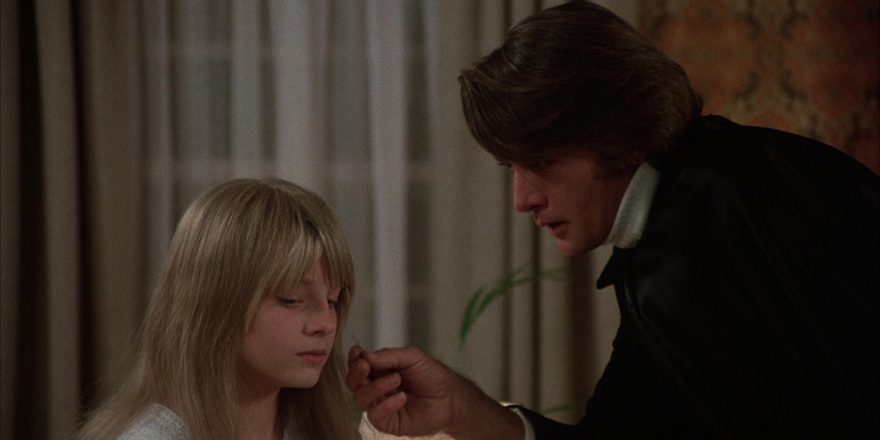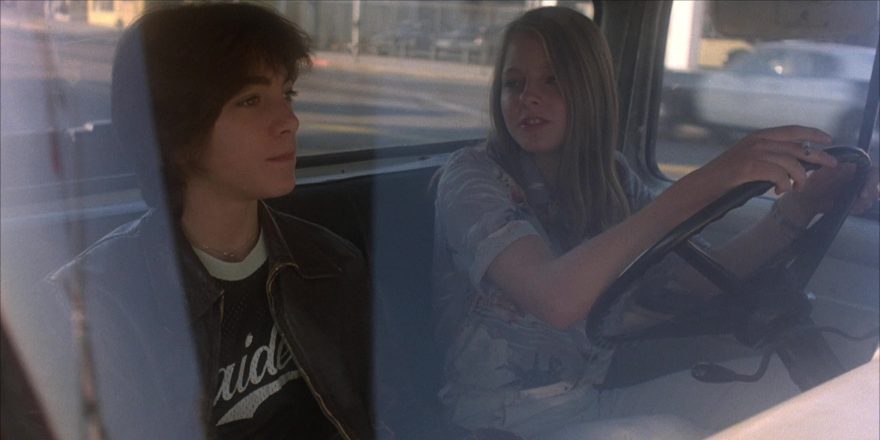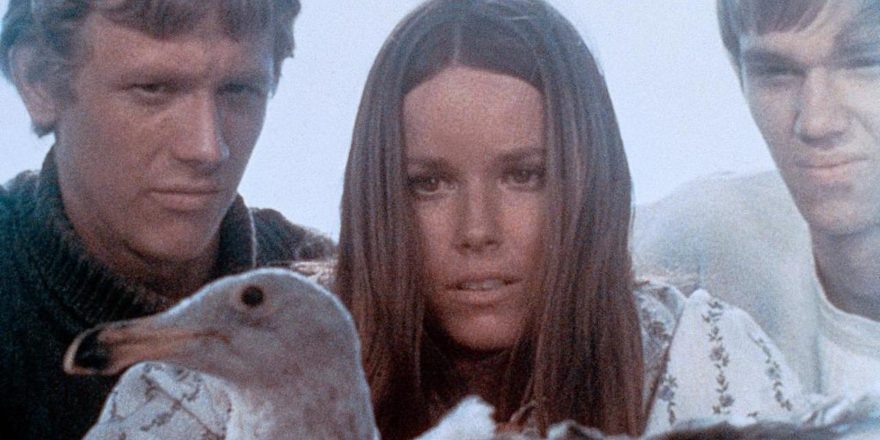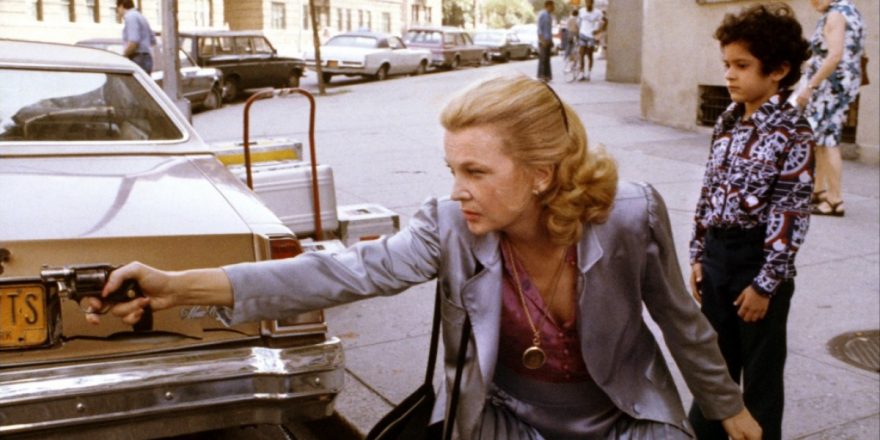The years 1975 and 1976 were very busy ones for child star Jodie Foster. A TV veteran who had made her debut on The Doris Day Show in 1969, Foster was busy making no less than five feature films that would all be released in 1976, including Taxi Driver, which would seal her infamy. Having already appeared in Scorsese’s Alice Doesn’t Live Here Anymore (1974) as the Ripple-swilling, precocious 11-year-old Audrey, a distinct tomboy whose father whipped her with a belt before he split and whose mother “turns tricks at the Ramada Inn from 3 p.m. on,” it was perhaps inevitable that the edgy director would cast her in his next feature as Iris, a 12-year-old girl who escapes her abusive family to become a Lolita-style prostitute. Bouncing back and forth between Scorsese’s shocking R-rated universe and wholesome family fare like Echoes of a Summer (1976) and Disney’s Freaky Friday (1976) and Candleshoe (1977), Foster also negotiated the heretofore undiscovered territory between a decidedly butch, proto-lesbian tween and the disconcerting prepubescent femme fatale of Bugsy Malone and The Little Girl Who Lives Down the Lane (both 1976), the latter film most successfully investigating this seemingly unresolvable dialectic.
Owing to the contradictions and ambivalences arising from her uncomfortable sexual objectification, there’s often an element of masquerade (if not outright drag) in early Jodie Foster movies, acting as a kind of distancing device. The Little Girl Who Lives Down the Lane is no exception. The credit sequence shows Foster’s character, Rynn Jacobs, on the beach wearing her typical early-teenage-era clothing – corduroy trousers and a sweater over a boy’s shirt, toggle-buttoned masculine jacket – but with the addition of long, coarse blond hair, an obvious wig that is intended to be real, lending her a drag aspect. In the first scene, establishing the odd girl alone in a large, well-appointed house, she dons a strange off-white hooded kaftan with orange brocade trim that signifies a multiplicity of meaning – a child play-acting in adult clothing, a tomboy in girl drag, even a certain camp aesthetic (kaftans are often associated with old-school gay flamboyancy). The element of masquerade is heightened when we realize that it’s not only Rynn’s birthday (often an opportunity for dress-up), but also Halloween. After she lights a cigarette from one of the 13 candles on her birthday cake with her uniquely butch flair, a young man named Frank Hallet (Martin Sheen) arrives at her doorstep wearing a trench coat and black eye mask, carrying a Jack-o-lantern for trick-or-treating. We learn that Frank is a local creep, the rich son of the woman who rents Rynn and her poet father their house. They’ve just returned from some years in France and her mother, Rynn tells him, is dead.
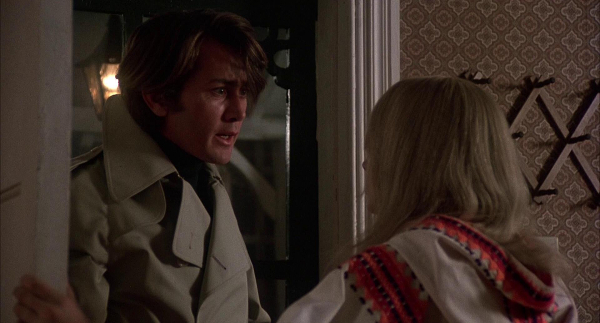
The ensuing scene presents another trademark of the Jodie Foster film, the problematic older man, whether he’s dirty and lecherous like Frank (or like Harvey Keitel as the pimp Sport in Taxi Driver) or more of an erotic father figure, such as Peter O’Toole in Svengali (1983) or John Lithgow in Mesmerized (1985). Foster’s peculiarly carnal persona gave rise to a number of unusual and sometimes awkward films that grappled with her difficult-to-define sexuality, often putting her in perilous or perverse situations. (Don’t even get me started on her forays into French filmmaking in 1977, Beach House and Stop Calling Me Baby, the latter featuring her as a skateboarding teenage girl who dresses in boy drag while being romanced by a somewhat older man.) In The Little Girl Who Lives Down the Lane, the trench coat-wearing Frank is the prototypical “dirty old man” who tries to molest her. When she offers him the treat of two pieces of birthday cake, he prefers the trick and grabs her arms, making a pass at her. She fends him off for now, but in the next scene he spies on her creepily on the beach, and he will return persistently to perv on her throughout the movie.
Shot as a tax-shelter film in Canada, The Little Girl Who Lives Down the Lane also stars the Canadian actress and Hollywood veteran Alexis Smith (whom Foster spars with like a pro) as Frank’s imperious mother, Mrs. Hallet, playing the typically evil adult of many a Foster film that harasses her and tries to rob her of her independence and autonomy. (Foster, whose father left before she was born and who supported her family by working as an actor from the age of four, was naturally suited to such scenarios.) “Thirteen means I have no rights, is that it?” she asks Mrs. Hallet indignantly. (Later in the film, she delivers perhaps the ultimate teen Jodie Foster credo: “School is people telling you how life is and never finding out by yourself.”) When Mrs. Hallet begins to snoop around, suspicious that Rynn is merely pretending her father lives with her, she finally insists on going down to the cellar to retrieve some jelly jars. When she discovers something horrifying, she accidentally trips the trap door, which fatally hits her on the head, knocking her back down into the cellar. We later discover that Rynn has indeed been living a lie, creating the illusion that her father is still alive through a variety of ingenious methods, such as smoking his brand of French cigarettes to manufacture his odor in the house. The horror in the basement, it turns out, is the stuffed body of her abusive mother, which, thanks to taxidermy lessons, the little girl stuffed herself! (Belief is continually beggared in this film.) The theme of the absent parent and the “ghost father” is another strong aspect of Foster’s screen persona, culminating, perhaps, in The Silence of the Lambs; her character, Clarice Starling, is haunted by her father’s death as a child, and replaces him, in her terrified subconscious, with the monstrous father figure Hannibal Lecter.
Rynn’s love interest in The Little Girl Who Lives Down the Lane, Mario (Scott Jacoby), the nephew of the local police officer, is another example of the type of teen boy Foster was often paired with, his long hair and sensitive eyes giving him a certain anti-macho aspect. He also has a limp, from childhood polio, which, in Hollywood parlance, often signifies the castrated male. (Think Rear Window or The Beguiled and beyond.) Foster’s crypto-lesbian image often demanded, in her teen years, a non-threatening or feminized love object (see also my Talkhouse piece on Foxes), and the damaged Mario, with his gimpy leg and his propensity for fantasy and masquerade (he dresses as a magician in a red-lined cape and top hat) fits the bill perfectly. After Mario helps Rynn get rid of Mrs. Hallet’s Bentley, the pair bonds over their distaste for school, which Rynn calls “stultifying,” and their mutual habits of fantasy and make-believe, only to be interrupted by the menacing Frank, who tortures and kills Rynn’s hamster by extinguishing a cigarette on it and throwing it into the fireplace. Mario finally rises to the occasion by pulling his (need I say phallic) sword on Frank and scaring him out of the house.
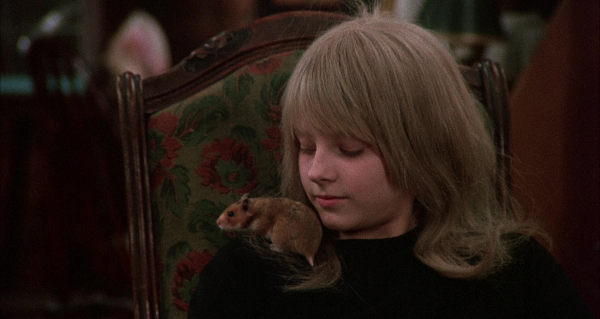
The overall scenario of the film, although far-fetched, is complex and rather ingenious, each piece of the puzzle neatly falling into place through exposition. With Frank gone, Rynn confesses everything to Mario. It seems that before her father drowned himself, he was so worried the abusive mother who abandoned them would return to harm Rynn that he left her a sedative to put in her tea should she become aggressive. As it turns out, the sedative was cyanide, and Rynn unwittingly murdered her mother as her father’s proxy. As she tells the story, she also serves Mario a cup of tea, along with almond cookies that would mask the taste of almonds that cyanide is known for, and for a moment Mario starts to get the symptoms of the poisoning. But it turns out to be just another game of make believe, and Mario, now thoroughly tried and tested, starts to become Rynn’s partner in crime. Together in the rain they bury the bodies of her mother and Mrs. Hallet in the yard, and Mario even dresses up as her French poet father in an over-the-top scene to fool his uncle the cop into believing the father is actually alive. After all this scheming and bonding and fantasy play, Rynn and Mario finally lose their virginity to one another in a controversial scene in which Rynn appears nude before hopping into bed. (The story goes that the nudity was performed by a body double – in fact by Foster’s older sister, Connie – and Foster, uncomfortable with the scene, tried, unsuccessfully, to have it removed.) Apparently, however, Mario has not yet been adequately recuperated as the acceptably emasculated love object: he’s caught a bad cold from the rainy burial of the two mothers and ends up in the hospital with pneumonia, Rynn’s male savior once again rendered passive and ineffectual. Boyfriends never fare well in Jodie Foster movies, for obvious reasons, as we might have guessed earlier in the film when Rynn is shown at the back of a bus reading a book of Emily Dickinson poems!
The ending of The Little Girl Who Lives Down the Lane vividly reinforces the “femme fatale gone haywire” aspect of the Jodie Foster persona. After melancholic scenes of Rynn sitting in a diner with an untouched hamburger and strawberry milkshake in front of her, and riding alone at the back of a bus, she returns to her empty house. While staring abjectly at her empty hamster cage, for a moment she thinks she sees Mario in his magician’s outfit coming out of the trap door of the cellar, but it turns out to be the creepy Frank, the young dirty old man masquerading as her boyfriend, who’s still languishing in intensive care. Frank has found a fingernail and a hairpin of his mother in the basement, proof to him that Rynn has done her in. He now has the leverage he needs to seduce her and make her his child mistress, but before allowing him to have his way with her, she fixes him some tea, laced, of course, with cyanide. Thinking he’s outsmarting her, Frank makes her drink from his cup first, and then, satisfied that it isn’t poisoned, drinks from hers. As Chopin’s “Piano Concerto #1” plays, he still tries to seduce her while dying, the camera tracking into a close-up of her impassive face after he succumbs to the poison, a shot that lasts for the duration of the closing credits.
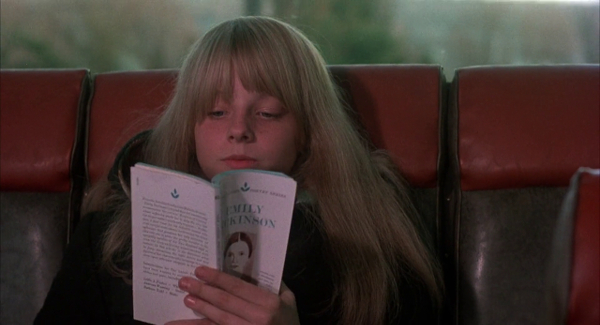
It stands to reason that in the movies a male character that sexually molests a teen is going to come to a gruesome end, but the irresolvable contradictions of Jodie Foster’s early screen persona – the tomboy femme fatale – makes such a scenario even more complex and disturbing. As the Disney star who played teen alcoholics, child prostitutes and baby butches, Foster had a sexual persona that always remained ambivalent and problematic. (Even in the G-rated Disney movie Freaky Friday, the implications of the tween girl in her adult mother’s body, forced into vaguely romantic situations with her own father, are a tad disconcerting.) In her transition to adulthood, her sexuality was irrecuperable. In the very carnal Carny (1980), she plays a young girl who leaves an abusive boyfriend to join a carnival where she dresses as a stripper and gets involved in a steamy love triangle with two carnies caught up in a repressed homosexual bromance. In The Hotel New Hampshire (1984), she plays a girl who not only has an incestuous relationship with her brother, but also remains in love with the boy who rapes her and has a lesbian affair with Nastassja Kinski dressed as a bear! The unsustainability of her sexual persona in Hollywood terms reaches its apex in The Accused (1988), in which she plays a relatively masculine young woman with a strong sex drive who is raped by three men in a bar who grotesquely mistake her open carnality for consent. The fact that Foster and her co-star Kelly McGillis, who plays her lawyer, both came out as lesbians later in their careers may be coincidental, but it may also indicate how difficult it is for women with alternative sexualities to negotiate Hollywood conventions, and how the roles they end up gravitating toward are perhaps an indication of the unruliness and inherent rebelliousness of their real-life situations, mirrored by their complicated screen personae.


